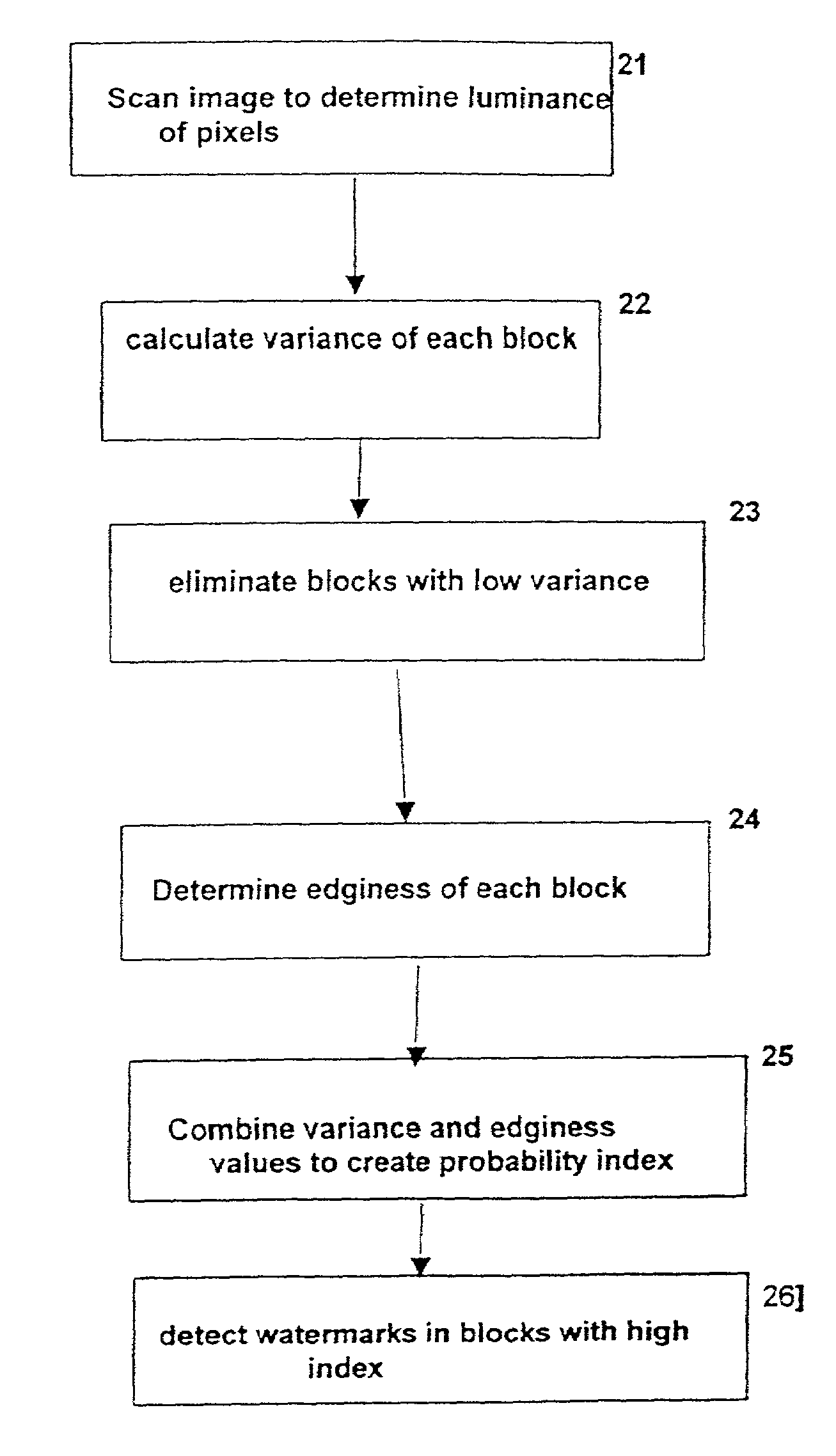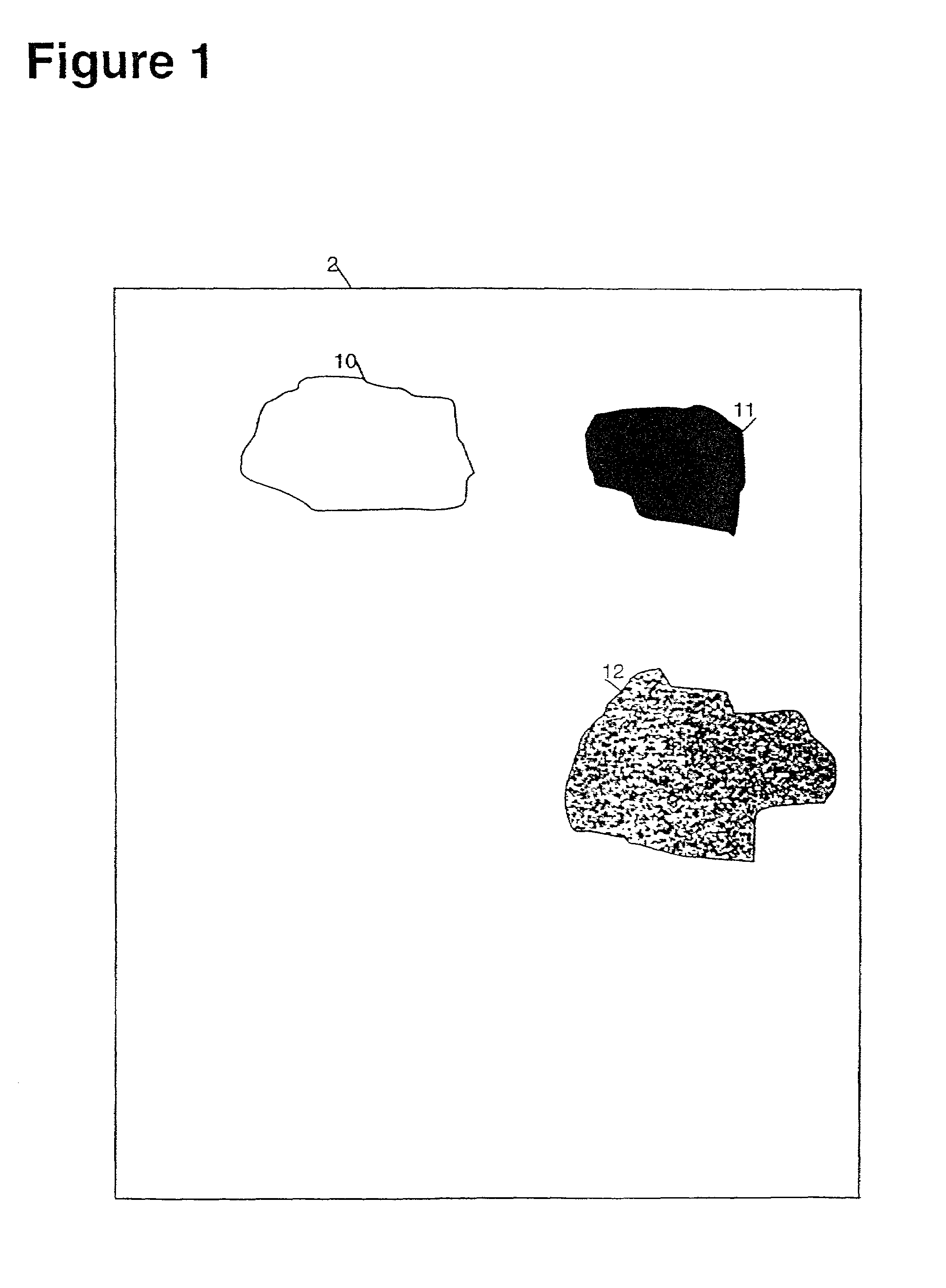Watermark detection utilizing regions with higher probability of success
- Summary
- Abstract
- Description
- Claims
- Application Information
AI Technical Summary
Benefits of technology
Problems solved by technology
Method used
Image
Examples
Embodiment Construction
[0025]Digital watermarks are generally inserted into images in a redundant manner. That is, images are divided into regions and the same digital watermark data is inserted into each region of the image. The ability of a particular region of an image to effectively carry digital watermark data depends upon the characteristics of the image in the particular region. Different areas in an image may have more or less ability to carry watermark data. For example an area in an image that is entirely white or entirely black will not have the ability to carry watermark data without changing the appearance of the area. Modem watermarking programs use visually perceptual adaptive techniques when inserting watermark data into an image. The amount of watermark energy inserted into a region is adjusted depending on the characteristics of the region so as to avoid changing the visual appearance of the image. For example, no watermark energy would be applied to an area of an image that is entirely ...
PUM
 Login to View More
Login to View More Abstract
Description
Claims
Application Information
 Login to View More
Login to View More - Generate Ideas
- Intellectual Property
- Life Sciences
- Materials
- Tech Scout
- Unparalleled Data Quality
- Higher Quality Content
- 60% Fewer Hallucinations
Browse by: Latest US Patents, China's latest patents, Technical Efficacy Thesaurus, Application Domain, Technology Topic, Popular Technical Reports.
© 2025 PatSnap. All rights reserved.Legal|Privacy policy|Modern Slavery Act Transparency Statement|Sitemap|About US| Contact US: help@patsnap.com



